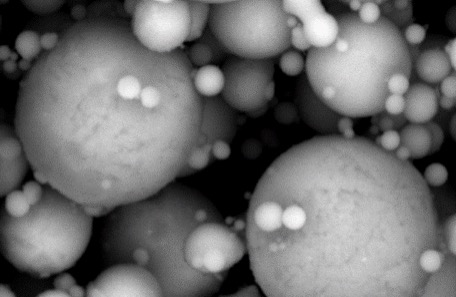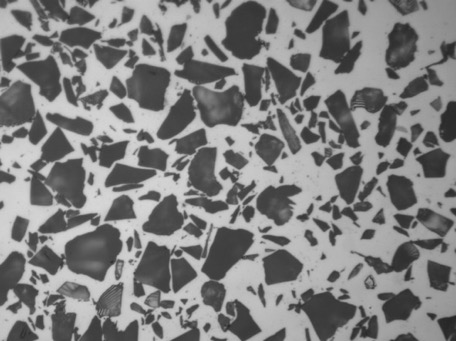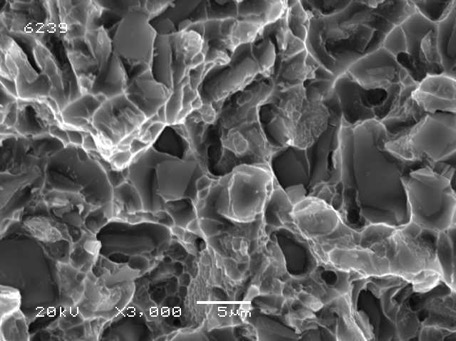Metal-Matrix-Composites for Lighter Weight Designs
Composite Strengthening
Al MMC strength enhancement is primarily related to the extremely low CTE of the SiC particles and how they strain the atomic lattice of the aluminum matrix, resulting in a dramatic increase in dislocation density. The combination of solid-state MMC processing and dislocation formation also results in a super-fine, coherent field of precipitates in the matrix. Ultimately, both the reinforcement and the precipitates limit the mobility of these dislocations leading to enhanced yield and ultimate tensile strength in the Al MMC. Further, it is important to note that there is a direct relationship between SiC content and Al MMC strength.
Other factors influence Al MMC strength. Smaller reinforcing particles will create even greater dislocation populations in the aluminum matrix leading to what is commonly referred to as size dependent composite strengthening. Additionally, the aluminum matrix alloy composition has a significant influence; higher strength matrices will yield higher strength Al MMCs. The total amount of thermo-mechanical work experienced during secondary processing also plays a role. High area reduction ratio extrusion will cause reinforcing particles to align in the extrusion direction, resulting in higher Al MMC strength.
Composite Stiffness and CTE
The increased modulus of elasticity (stiffness) of Al MMCs is commonly explained using the rule of mixtures, i.e., EMMC= (EAl)(Vol%Al) + (ESiC)(Vol%SiC), and the interaction of the aluminum matrix with the SiC particles. Enhanced modulus is also the result of load transfer between the ductile metallic phase and the non-deformable reinforcing ceramic phase, and the matrix constraint by the reinforcement. It also follows that an increasing SiC particle content results in higher stiffness Al MMCs. For Al MMCs with a balanced mix of properties, modulus enhancement is typically 40-50% higher than conventional aluminum.
Given the similarity in density between the aluminum matrix alloy and SiC, Al MMC modulus per unit density (or specific stiffness) is significantly higher than that for conventional metals. Because of the isotropic nature of Al MMCs, stiffness driven avionics racking has been designed and extruded and assembled with weights below that for carbon fiber composites.
The rules-of-mixtures also explains why the coefficient-of-thermal-expansion (CTE) of Al MMCs decreases with increasing SiC particle reinforcement volume loading. At a 40% SiC content, Al MMC CTE is equivalent to Beryllium. At a 50% SiC content, Al MMC CTE begins to approach that of far heavier electronic packaging materials such as Copper-Tungsten (Cu-W).
Dynamic Response
Al MMC’s possess enhanced dynamic properties such as improved fatigue and crack growth resistance as a direct result of the symbiotic relationship between the SiC reinforcing particles and the metal matrix. Together, the enhanced yield strength of the matrix and the presence of fine SiC particles retard crack growth initiation. Additionally, the presence of the fine SiC particles obstruct the path of the crack front and force the crack to follow a more tortuous path on a micro-scale. On a macro-scale, this tortuous path results in a slow progression of the overall crack front, which translates to improved fatigue resistance when compared with conventional, monolithic aluminum alloys.
DWA-USA Al MMCs also possess excellent fracture toughness. This is especially true for 2009/SiC/15p Al MMC forgings. Measured KIC values range from 29-32 MPa√m (26-29 ksi√in).
Case Studies
Fielded Applications
DWA-USA specializes in new aluminum-based powder metallurgy materials and applications development. We serve our customers throughout the entire development cycle, whether it be an upgrade to an existing design or starting from the ground up. Our track record for transitioning prototyping efforts to real world serial production is unparalleled.
View our Case StudiesDensity Adjusted Properties of Aluminum MMCs Compared to Steel, Titanium and Aluminum

One of the clear advantages of Al MMCs compared to conventional metallic materials is greatly enhanced strength and stiffness. These property gains are achieved without impacting material density, so the specific properties of Al MMC are dramatically increased. Al MMCs are also isotropic composite materials. Their design space is not dependent on reinforcement orientation.
DWA Aluminum Composites
Aluminum Metal-Matrix-Composites Manufacturing
The Al MMC manufacturing process can be divided into three elements- primary processing, secondary processing and finishing. Unlike other composite materials, after primary processing of the billet, Al MMCs offer a high level of “fit, form and function” when inserted into the industrial manufacturing stream, making use of conventional facilities and equipment.
Learn MoreReach out and learn more
Contact Us
Thank you for your interest. To contact us, please fill out and submit the form below. One of our staff will be in touch with you shortly.






